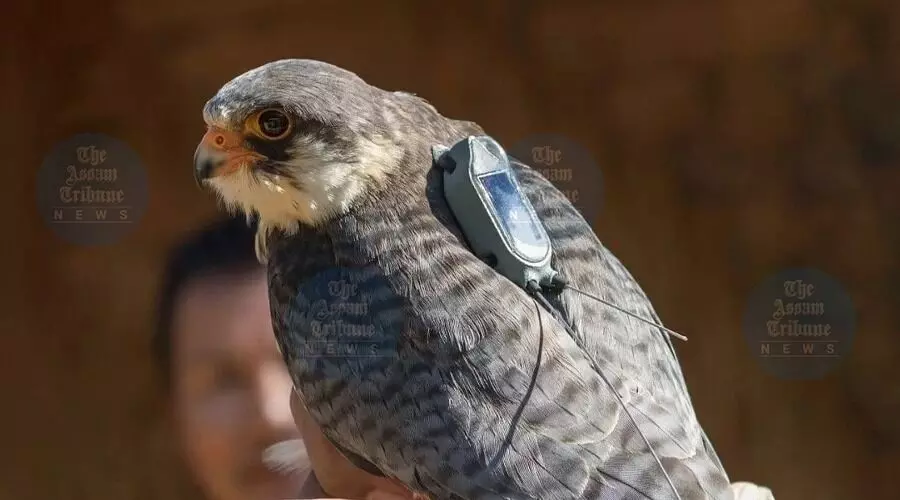Manipur forest dept to radio-tag 2 Amur falcons to study routes & environmental patterns

AT Photo: Amur Falcon
Imphal, Oct 29: The Manipur forest department is planning to tag satellite radio transmitters to two Amur falcons to study the route of these long-distance migratory birds and the environmental patterns along the route.
“For this, a scientists' team of the Dehradun-based Wildlife Institute of India (WII) will be arriving here on November 3,” said divisional forest officer Kh Hitler Singh of Tamenglong Forest Division. “As usual, we are also organising the Amur falcon festival with wildlife conservation awareness activities at Tamenglong district in the third week of November this year.”
Such a radio-tagging programme was taken up for the first time in the State in 2018 followed by another in 2019, in a move to conserve wildlife, as India is a signatory to an international agreement on conservation of migratory birds of prey.
On November 4, 2018, two more falcons- named Tamenglong (female) and Manipur (male) - were tagged in Tamenglong. Unfortunately, Manipur was found dead four days later while contact was lost with Tamenglong after it reached Zambia.
When contacted, Dr Suresh Kumar of WII who has radio-tagged more than 10 Amur falcons and had also been involved in the previous radio-tagging programmes, said that they plan to tag two falcons.
Locally known as ‘Akhuaipuina’, this pigeon-sized world's longest travelling raptors, have begun to arrive in Tamenglong and Noney districts in large numbers in the last few days as part of their annual routine migration.
The falcons spend their summers at their breeding grounds in southeast Russia and northeast China. They migrate to their wintering grounds in South Africa, from where they start their return journey in April-May through Afghanistan and East Asia, undertaking a yearly journey of about 20,000 km. In between, they stop in India's Northeast, where they have been killed in large numbers in recent years, and Somalia.
These birds arrive in large numbers during October in Nagaland and Manipur besides a few other places in Northeast India. They leave the region in November after having enough food for their non-stop flight to Africa where they spend their winter.
The district magistrates of Tamenglong and Noney districts have ordered a ban on the use of air guns, further asking all in possession of the same to deposit them to the village authorities.
